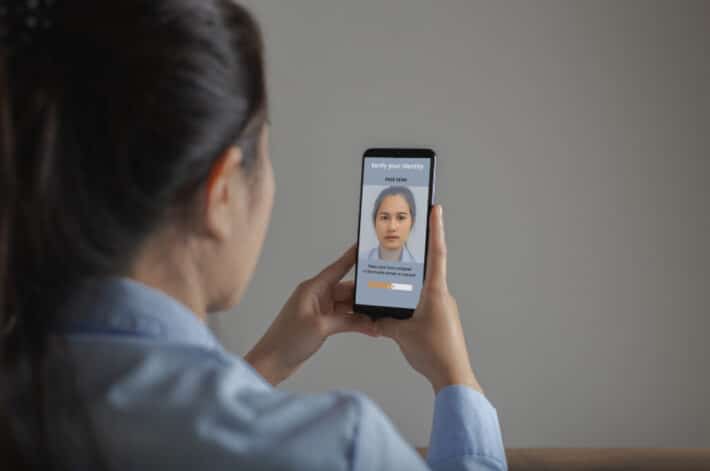Identity Verification Methods

In a world where digital transactions and online interactions are becoming increasingly prevalent, the need for secure and reliable identity verification methods has never been more important. Traditional methods, from personal identification documents to biometric authentication, have long been the standard. However, with the rise of new technologies such as Artificial Intelligence, Machine Learning, and Blockchain, the landscape of identity verification is rapidly evolving.
This article will explore the challenges with traditional methods, the benefits of these new technologies, and the future of identity verification in various industries. Join us on this journey as we delve into the world of modern identity verification.
What Is Identity Verification?
Identity verification is the process of confirming a person’s claimed or presented identity through various methods and techniques to ensure security and authenticity. Digital identity has become increasingly crucial in our interconnected world, where online transactions and interactions are a norm. Biometric authentication, such as fingerprint scans or facial recognition, has revolutionized the way identities are verified, offering a higher level of security and accuracy.
Beyond biometrics, there are diverse verification processes like knowledge-based authentication, email or SMS verification, document verification, and even social media verification methods. These layers of verification not only prevent identity theft and fraud but also enable seamless and trustworthy digital experiences for individuals and organizations alike.
Why Is Identity Verification Important?
Identity verification holds paramount importance in the digital age due to the increasing cybersecurity threats, technology advancements, and the critical need to safeguard personal information from identity theft. Verifying one’s identity is crucial not only for protecting sensitive data but also for maintaining secure online transactions. By integrating advanced verification systems, businesses and individuals can create a strong deterrent against potential breaches and fraudulent activities.
Identity verification plays a key role in enhancing overall cybersecurity measures, providing an extra layer of defense to prevent unauthorized access and identity theft. Stringent identity verification processes contribute to bolstering data protection efforts, ensuring that only authorized individuals have access to confidential information.
Traditional Methods of Identity Verification
Traditional methods of identity verification encompass a range of approaches, including personal identification documents, knowledge-based authentication, and biometric authentication, each serving as key components in the verification process.
- Personal identification documents such as passports, driver’s licenses, and national identity cards have long been used to confirm an individual’s identity.
- Knowledge-based authentication techniques involve verifying personal information that only the legitimate user would know, such as passwords, security questions, or PIN numbers.
- Biometric authentication has emerged as a cutting-edge verification technique, using unique physical characteristics like fingerprints, iris scans, or facial recognition to validate identity with a high level of accuracy and security.
Personal Identification Documents
Personal identification documents play a crucial role in traditional identity verification processes, requiring users to present valid forms of identification to authenticate their identity. The use of personal identification documents is not only essential for confirming the identity of individuals but also serves as a critical component in ensuring security measures are properly upheld. These documents come in various forms, including government-issued IDs like driver’s licenses, passports, and national ID cards.
Each document carries unique details and security features that help in verifying user authenticity. With the rise of online transactions and digital interactions, accurate document verification becomes even more vital to enhance user authentication processes and protect against identity theft and fraud.
Knowledge-based Authentication
Knowledge-based authentication involves verifying identity through information only known to the user, such as passwords or security questions, serving as a common yet vulnerable method of verification. It is a popular means of confirming user identity due to its simplicity and ease of use. This method heavily relies on the accuracy and confidentiality of the user-provided information, which can pose security risks if compromised.
As cyber threats evolve, traditional password protection alone may not be sufficient to safeguard sensitive data. Therefore, integrating additional verification techniques, such as biometrics or two-factor authentication, is becoming essential to enhance security measures and protect against unauthorized access.
Biometric Authentication
Biometric authentication represents a cutting-edge method of identity verification that utilizes unique biological traits like fingerprints or facial features to confirm identity, offering enhanced security and accuracy. Facial recognition technology is a prominent form of biometric identification that has gained widespread acceptance in various applications. This technology works by analyzing and capturing unique facial features of individuals, such as the distance between eyes or the shape of the nose, to authenticate their identity.
The implementation of biometric verification tools based on facial recognition has revolutionized security measures in industries ranging from finance and healthcare to law enforcement and travel. Companies are increasingly investing in these advanced systems to safeguard sensitive information and ensure user access control.
Challenges with Traditional Methods
Despite their widespread use, traditional methods of identity verification pose significant challenges, including security vulnerabilities, user inconvenience, and susceptibility to fraudulent activities. These challenges have become more pronounced in our increasingly digital world, where cyber threats are constantly evolving. The outdated nature of many traditional verification techniques can lead to a frustrating user experience, with long wait times and complex processes.
To address these issues, businesses are turning to advanced fraud prevention solutions that utilize cutting-edge technologies like biometrics and artificial intelligence. These innovative methods not only enhance security but also provide a seamless and efficient verification process for users.
Lack of Security
One of the primary challenges with traditional identity verification methods is the lack of robust security measures, making systems vulnerable to fraudulent activities and necessitating the adoption of more secure verification solutions.
Many traditional methods, such as using knowledge-based questions or relying solely on static personal information, are no longer sufficient in today’s sophisticated threat landscape. These outdated practices are susceptible to exploitation by cybercriminals who can easily gather personal details through data breaches.
To combat this, organizations must implement multifactor authentication and biometric verification solutions. These advanced technologies offer enhanced security measures by requiring multiple layers of verification, making it significantly harder for unauthorized individuals to gain access to sensitive information.
Inconvenience for Users
User inconvenience is a common challenge in traditional identity verification processes, as users often face complex authentication steps, leading to friction in the verification process and highlighting the need for more user-friendly verification tools.
Such complexities not only result in a cumbersome user experience but can also increase the chances of errors or delays in the verification process. This frustration can lead to decreased user satisfaction and potential drop-offs during the verification stage. By integrating intuitive verification tools such as biometric authentication, one-click verification links, or AI-powered solutions, organizations can streamline the authentication process, enhance security measures, and ultimately provide a smoother and more efficient user authentication experience.
Vulnerability to Fraud
Traditional identity verification methods are inherently vulnerable to fraud, as malicious actors exploit weaknesses in the system to commit identity theft and fraudulent activities, underscoring the critical need for robust fraud prevention techniques. These vulnerabilities in traditional verification methods can lead to severe consequences for individuals, businesses, and even governments. Identity theft, in particular, can result in financial losses, damaged reputations, and emotional distress for victims.
The implications of fraudulent activities go beyond just financial harm, extending to potential legal issues and compromised personal information. In order to address these risks effectively, organizations must adopt advanced verification techniques such as biometric authentication, multi-factor authentication, and artificial intelligence-powered fraud detection systems.
New Technologies in Identity Verification
Emerging technologies are revolutionizing the landscape of identity verification, with advancements in artificial intelligence, machine learning, and blockchain offering innovative solutions to enhance security and authentication processes. These new technologies not only provide more secure methods of identifying individuals but also offer a seamless user experience.
Artificial intelligence enables systems to analyze vast amounts of data rapidly, detecting patterns and anomalies that may indicate fraudulent activities. Machine learning algorithms constantly learn and adapt to new threats, fortifying defense mechanisms against cyber threats. Blockchain protocols ensure the integrity of identity records by creating a decentralized and tamper-proof system that enhances trust in the verification process.
Artificial Intelligence
Artificial intelligence has redefined identity verification by enabling advanced biometric identification techniques, real-time fraud prevention capabilities, and adaptive authentication protocols, setting new standards for secure identity validation. These AI applications play a pivotal role in enhancing security measures across various industries such as finance, healthcare, and e-commerce.
By leveraging AI algorithms, businesses can accurately verify an individual’s identity through facial recognition, fingerprint scanning, voice authentication, and eye tracking. This not only streamlines the verification process but also helps in preventing identity theft, unauthorized access, and financial fraud. AI-driven fraud prevention mechanisms continuously analyze user behaviors and patterns to detect anomalies in real-time, ensuring a robust defense against fraudulent activities.
Machine Learning
Machine learning algorithms play a pivotal role in identity verification by optimizing validation processes, ensuring secure identification practices, and enhancing the overall accuracy of verification systems. These algorithms have revolutionized the way personal identities are confirmed in various industries, including banking, healthcare, and e-commerce.
By analyzing patterns and behaviors, machine learning models can quickly detect anomalies or inconsistencies in identification documents, reducing the risk of fraudulent activities. The adaptive nature of machine learning enables continuous learning from new data, leading to constantly improving validation mechanisms that stay ahead of evolving security threats. The incorporation of machine learning in identity verification brings a higher level of efficiency and reliability to the authentication process.
Blockchain
Blockchain technology is reshaping identity verification by offering decentralized validation mechanisms, secure access controls, and transparent verification processes, ensuring the integrity and privacy of identity data. By utilizing blockchain for identity verification, individuals can benefit from a system that eliminates the need for centralized intermediaries, thereby reducing the risk of data breaches and identity theft.
This innovative technology allows users to securely access and control their own identity information without relying on third-party entities. Through the transparent verification processes enabled by blockchain, users can have greater confidence in the security and accuracy of their personal data, leading to more trust in digital transactions and interactions.
How Do These Technologies Improve Identity Verification?
Advanced technologies in identity verification enhance security measures, improve user experience by streamlining authentication processes, and significantly reduce the incidence of fraudulent activities, setting new standards for secure identity validation. These cutting-edge technologies have revolutionized the way individuals establish their identities online, offering seamless and efficient methods for verification. By incorporating biometric authentication, such as facial recognition and fingerprint scans, users can now access accounts with heightened security and convenience.
The integration of AI algorithms and machine learning techniques ensures that fraudulent attempts are swiftly identified and thwarted, safeguarding sensitive information and personal data. This emphasis on user-centric authentication experiences not only strengthens security protocols but also enhances overall trust in digital transactions and interactions.”
Enhanced Security
Advanced technologies reinforce security measures in identity verification processes, incorporating robust fraud prevention mechanisms, ensuring regulatory compliance standards, and safeguarding against evolving cybersecurity threats. These technologies play a pivotal role in enhancing the accuracy and reliability of identity verification systems through advanced biometric authentication methods, such as facial recognition and fingerprint scanning.
By integrating artificial intelligence and machine learning algorithms, these systems can detect fraudulent activities in real-time and provide instant alerts to mitigate risks. The implementation of encryption protocols and secure data storage practices further strengthens the protection of sensitive information, ensuring that personal data remains confidential and secure.
Improved User Experience
Cutting-edge technologies prioritize user experience enhancements in identity verification, offering intuitive verification tools, seamless authentication processes, and secure transaction capabilities, elevating the overall user journey. This emphasis on user-centric design in modern identity verification technologies stems from the recognition that users value efficient and secure interactions.
By incorporating user-friendly verification tools, organizations not only enhance the user experience but also bolster security measures. Seamless authentication experiences not only simplify the verification process but also reduce the risk of fraudulent activities. Integrating secure transaction protocols within the verification system ensures that sensitive information is safeguarded during transactions, instilling trust and confidence in users.
Reduced Fraud
Modern identity verification technologies significantly lower the risk of fraudulent activities through advanced fraud prevention measures, robust validation techniques, and secure transaction frameworks, safeguarding users and organizations from financial losses and data breaches. By leveraging cutting-edge biometric authentication methods and AI-powered algorithms, these technologies enhance the accuracy and reliability of verifying individual identities, making it increasingly difficult for cybercriminals to infiltrate systems.
Through the continuous evolution of identity verification processes and the implementation of multi-factor authentication protocols, businesses can establish a more resilient defense mechanism against identity theft and unauthorized access. With the integration of blockchain technology and encryption protocols, sensitive personal information is securely stored and transmitted, further fortifying the overall security posture of digital transactions.
Future of Identity Verification
The future of identity verification is poised for groundbreaking advancements with the integration of multiple technologies, a shift towards digital identity verification methods, and increasing adoption across diverse industries, reshaping the landscape of secure verification processes. These developments are not only improving the efficiency and accuracy of verification processes but also enhancing user experience by streamlining the authentication journey.
From biometric recognition to blockchain technology, the fusion of various verification tools is enabling organizations to create more robust and secure identity verification systems. This transition towards digital verification models is not only revolutionizing traditional identity checks but is also paving the way for seamless and convenient verification processes in sectors such as finance, healthcare, and e-commerce.
Integration of Multiple Technologies
The future of identity verification hinges on the seamless integration of multiple advanced technologies, paving the way for more efficient identity verification protocols, enhanced security measures, and data-driven industry analyses to optimize verification processes.
By combining technologies like biometrics, artificial intelligence, and blockchain, the verification systems of tomorrow will be more robust and secure. Advanced biometric features such as facial recognition and fingerprint scanning ensure a higher level of accuracy, while AI algorithms continuously learn and adapt to detect fraudulent activities. Blockchain technology provides an immutable ledger for storing sensitive information securely. Data analytics play a crucial role in providing real-time insights for industry analysis, enabling organizations to enhance their verification strategies based on trends and patterns.
Shift Towards Digital Identity Verification
The evolving landscape of identity verification is witnessing a significant shift towards digital identity verification methods, encompassing seamless online verification processes, stringent identity validation measures, and advanced security protocols to facilitate secure and efficient verification workflows.
As organizations adapt to the digital age, the adoption of online verification mechanisms has become paramount in ensuring swift and reliable identity verification. By leveraging cutting-edge technology, companies are streamlining their processes and enhancing customer experiences.
The implementation of robust identity validation measures adds an extra layer of security, safeguarding against fraud and unauthorized access. The integration of advanced security protocols bolsters the overall integrity of verification workflows, mitigating risks and instilling trust in online interactions.
Increased Adoption in Different Industries
The widespread adoption of identity verification technologies is expanding across various industries, driving the establishment of unified verification standards, ensuring regulatory compliance, and fostering secure identification practices in sectors ranging from finance to healthcare. This shift towards incorporating stringent identity verification processes is reshaping how organizations approach customer onboarding and transaction security.
With the increasing emphasis on compliance with regulatory mandates, businesses are embracing advanced technologies that not only streamline verification procedures but also offer enhanced data protection. By integrating these solutions, industries are not only reducing fraud risks and enhancing user trust but also contributing to the overall enhancement of security measures within their respective sectors.
Frequently Asked Questions
What are some common methods used for identity verification?
Some commonly used methods for identity verification include biometric identification, document verification, knowledge-based authentication, and two-factor authentication.
How does biometric identification work?
Biometric identification uses unique physical characteristics, such as fingerprints or facial recognition, to confirm a person’s identity. This method is highly accurate and difficult to fake.
Why is document verification important for identity verification?
Document verification involves verifying the authenticity of official documents, such as a driver’s license or passport. This method helps confirm a person’s identity and prevent identity theft.
What is knowledge-based authentication?
Knowledge-based authentication involves asking a person a series of questions based on personal information, such as their date of birth or mother’s maiden name, to confirm their identity. This method is commonly used for online identity verification.
How does two-factor authentication enhance identity verification?
Two-factor authentication requires users to provide two forms of identification, such as a password and a unique code sent to their phone, to access an account or confirm their identity. This adds an extra layer of security and makes it more difficult for hackers to access personal information.
Are there any disadvantages to using certain methods of identity verification?
Some methods, such as knowledge-based authentication, may rely on personal information that can be easily obtained or guessed by hackers. Biometric identification may also have privacy concerns if the data is not securely stored. It is important to carefully consider the pros and cons of each method and choose the most secure option for your needs.



